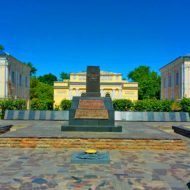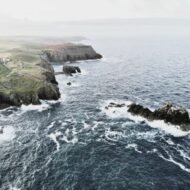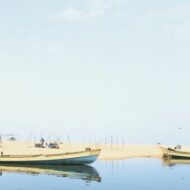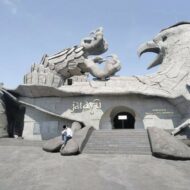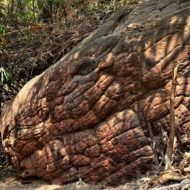Ivangorod Fortress is a medieval castle in Ivangorod, Leningrad Oblast, Russia. It is located on the Narva River along the Russian border with Estonia, across from the Estonian city of Narva. Ivangorod Fortress wad established by Ivan III in 1492, intended to reaffirm Muscovy’s right to access the Baltic Sea and to form a bulwark against the Teutonic Order, being built opposite the powerful Teutonic Hermann Castle. The fortress eventually grew into the town of Ivangorod, and the structures of the fort were gradually expanded and strengthened. Ivangorod Fortress was controlled by Sweden after the end of the Livonian War in 1583, changing hands numerous times during conflicts and border shifts over the following centuries until returning to permanent Russian rule after World War II via the Soviet Union. Today, Ivangorod Fortress is a museum and a tourist attraction. History : The original castle was constructed in one summer, in the year 1492. It was named after Muscovite Grand Prince Ivan III. Its purpose was to fend off the Livonian Knights. The castle is strictly quadrilateral, measuring 1,600 m2 (17,000 sq ft), with walls 14 meters tall.
Ivangorod was won back later in the year by Muscovite forces from the Livonians, under the command of Prince Ivan Gundar and Mikhail Klyapin. Three thousand troops arrived to retake the castle, rebuild it, and construct a new barracks and stronger bastions. For almost 10 years, the land around the castle was in constant warfare. The fortress and the land around changed hands repeatedly. The castle was reconstructed and fortified many times, becoming one of the strongest defensive structures in the 16th century. The castle was in development until the 17th century, becoming a large, sprawling fortress with several lines of defense.
The Treaty of Teusina (1595) returned the fortress to the Russians. In 1612, the Swedes conquered the fortress, which was bravely defended by a voivode, Fyodor Aminev (b 1560s, d 1628) and his sons. By the Treaty of Stolbova, Ingria was ceded to Gustav II Adolf, king of Sweden. In 1704, Peter the Great captured the castle from Swedish troops, bringing the fortress back into Russian control. Inside the fortress, there are two churches: one is dedicated to the Virgin’s Assumption (1496) and the other to St. Nicholas (built in the late 16th century but later reconstructed).
The museum : The history and art museum of Ivangorod fortress exhibits paintings of Ivan Bilibin, Alexandra Pototskaya and other authors. As well, local history and tradition are explained by some of museum’s exhibits, such as archeological finds encountered in the surrounding areas. There is a permanent exhibition devoted to the Northern War and the Livonian War. As well, there are models of fortresses in the surrounding region and armaments, and documents and letters related to famous people such as Fyodor Dostoyevsky, exhibited in the fortress museum.
Access : Coordinates: 59.374511, 28.207356 / The fortress is located in the border security zone. If you visit it as a member of a tourist group, then you will not have any troubles. In case you go there on your own – there is a fixed-route taxi or a regular bus from Saint Petersburg– , you will need a special permit to enter the territory of Ivangorod / 59.374511, 28.207356 / Crossing on foot – you have to know that there’re two border crossing points between Ivangorod and Narva. / By Bus – by car or by foot from Ivangorod , Crossing on foot – you have to know that there’re two border crossing points between Ivangorod and Narva.
Attractions : Church of St. Nicholas (in the fortress). One-domed church in the fortress / The museum .
Address: 1/6, Kingiseppskoye Shosse, Ivangorod (town), Leningrad Region /
Hours : Wednesday to Sunday, 10 am to 6 pm. Closed Mondays and Tuesdays.
Admissions: Adults: RUB 100.00 Children: RUB 50.00






